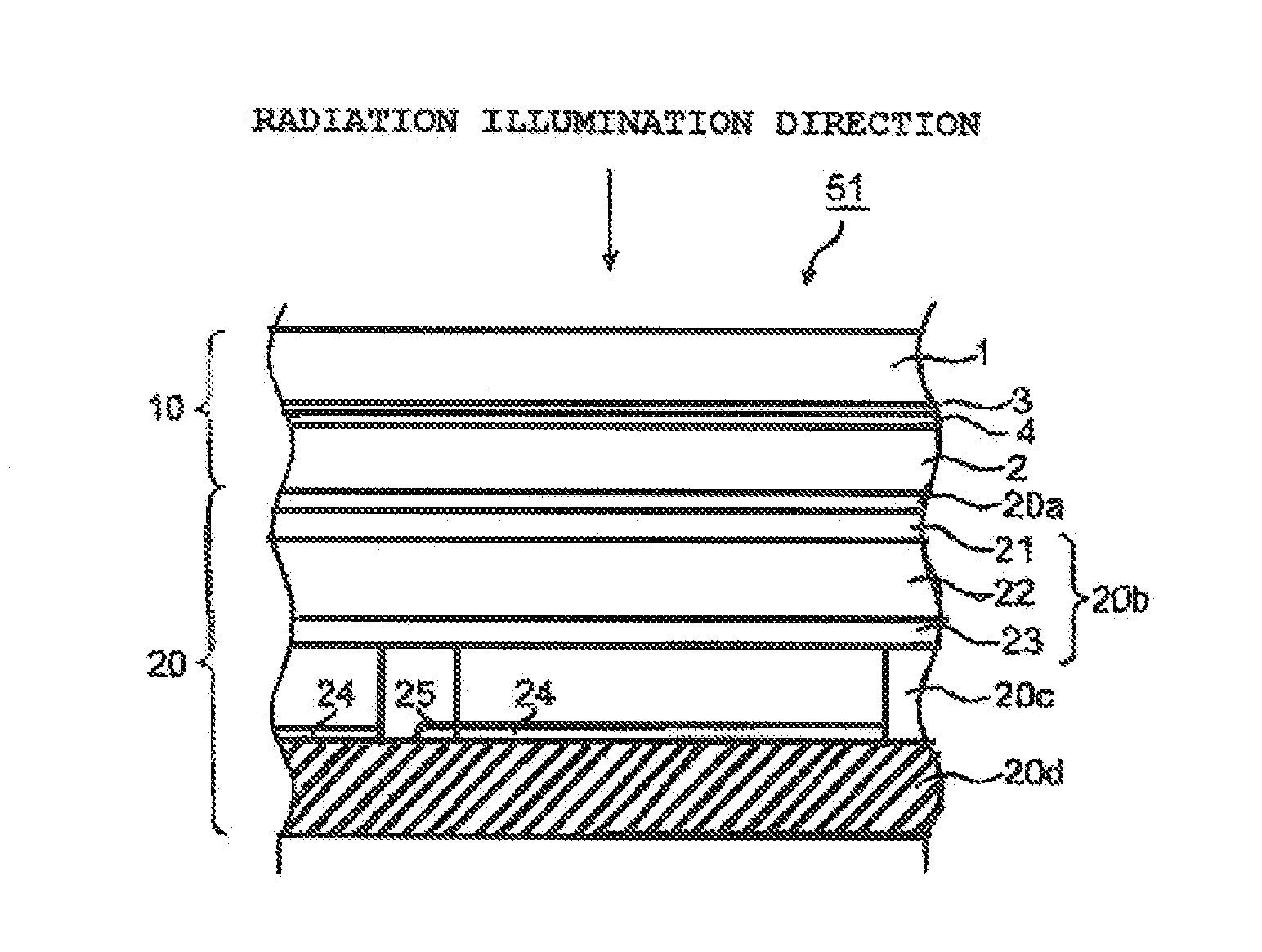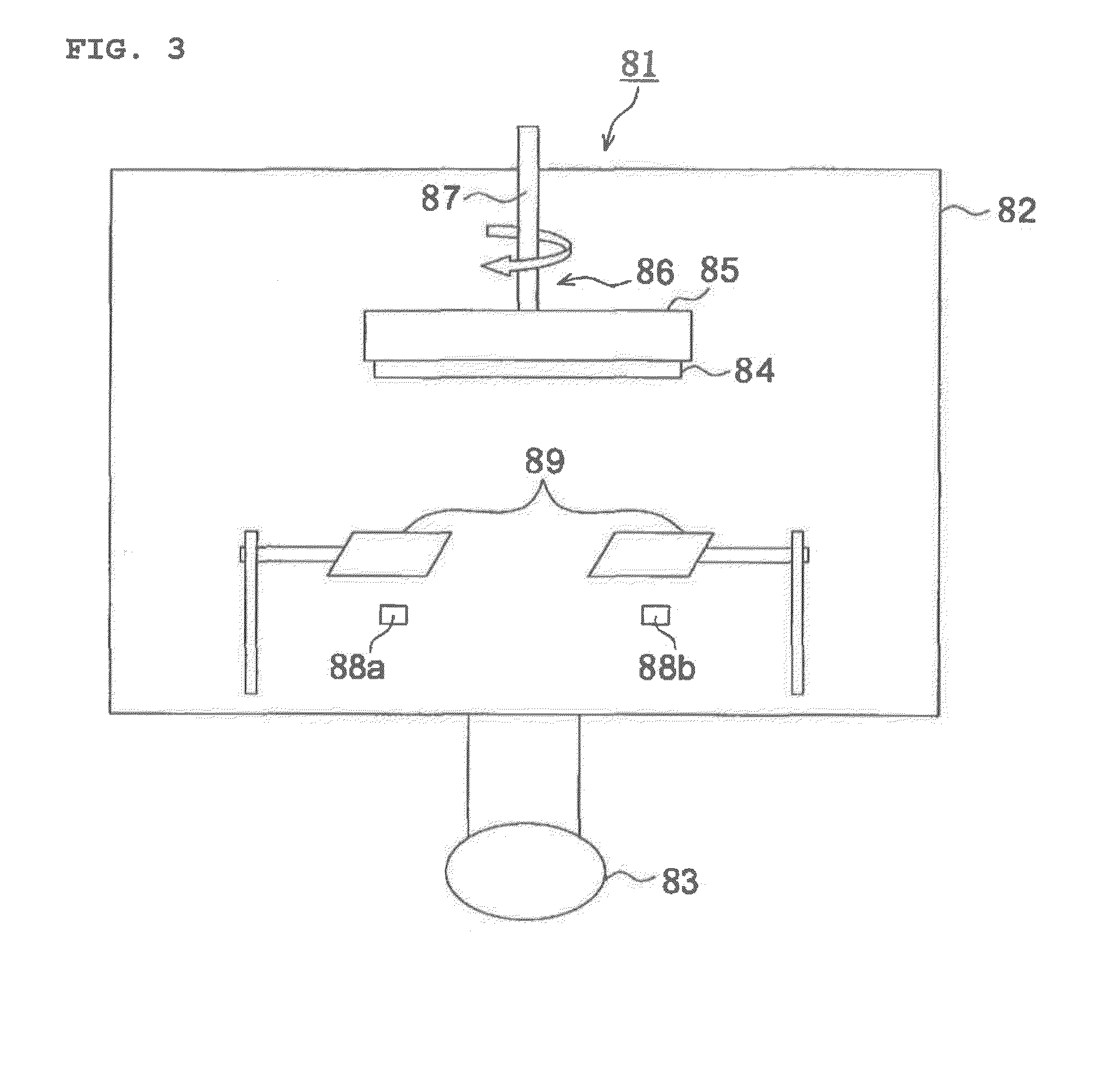Deposition substrate and scintillator panel
a technology of scintillator panel and substrate, which is applied in the direction of fluorescence/phosphorescence, optical radiation measurement, instruments, etc., can solve the problems of poor sharpness of x-ray images obtained with scintillator panel, unsatisfactory cuttability and light emission, etc., and achieve excellent cuttability, excellent sharpness, excellent cuttability
- Summary
- Abstract
- Description
- Claims
- Application Information
AI Technical Summary
Benefits of technology
Problems solved by technology
Method used
Image
Examples
example 1
Deposition Substrate No. 1
[0453]With a 125 μm thick polyimide film (UPILEX-125S manufactured by UBE INDUSTRIES, LTD.) as a support, a deposition substrate No. 1 was fabricated as follows.
[0454]10 Parts by mass of rutile-form titanium dioxide with an average particle diameter of 0.6 μm as light-scattering particles, 10 parts by mass of a polyester resin (VYLON 550 manufactured by TOYOBO CO., LTD., Tg: −15° C.) as a binder resin, and 40 parts by mass of cyclohexanone and 40 parts by mass of methyl ethyl ketone (MEK) as solvents were mixed together. The mixture was dispersed with a sand mill to give a first resin coating liquid (a reflective coating liquid 1). The first resin coating liquid was applied onto the polyimide film support 500 mm in width with a comma coater. The first resin coating liquid was then dried at 180° C. for 3 minutes to form a 50 μm thick first resin layer on the support. Further, a second resin coating liquid (a reflective coating liquid 2) having the same compo...
examples 2 to 7
Deposition Substrates Nos. 2 to 7
[0456]Deposition substrates Nos. 2 to 7 were fabricated in the same manner as in EXAMPLE 1, except that the thickness of the second resin layer free from light-scattering particles was changed as described in Table 1.
[0457]The deposition substrates Nos. 2 to 7 were subjected to various tests described later.
example 8
Deposition Substrate No. 8
[0458]A deposition substrate No. 8 was fabricated in the same manner as in EXAMPLE 1, except that the light-scattering particles were a mixture of 7 parts by mass of rutile-form titanium dioxide with an average particle diameter of 0.6 μm and 3 parts by mass of barium sulfate with an average particle diameter of 0.3 μm.
[0459]The deposition substrate No. 8 was subjected to various tests described later.
PUM
 Login to View More
Login to View More Abstract
Description
Claims
Application Information
 Login to View More
Login to View More - R&D
- Intellectual Property
- Life Sciences
- Materials
- Tech Scout
- Unparalleled Data Quality
- Higher Quality Content
- 60% Fewer Hallucinations
Browse by: Latest US Patents, China's latest patents, Technical Efficacy Thesaurus, Application Domain, Technology Topic, Popular Technical Reports.
© 2025 PatSnap. All rights reserved.Legal|Privacy policy|Modern Slavery Act Transparency Statement|Sitemap|About US| Contact US: help@patsnap.com



